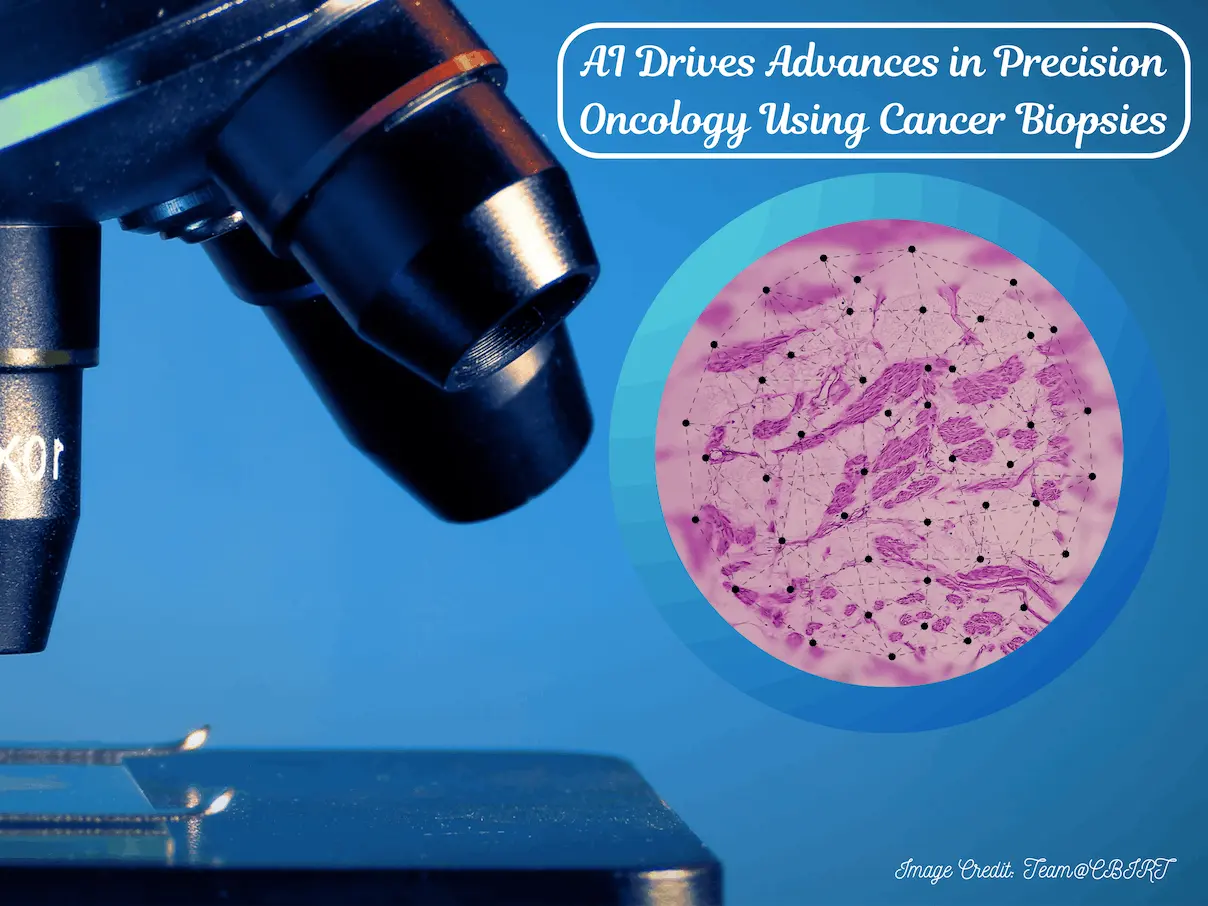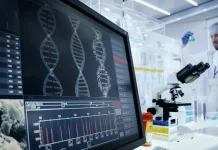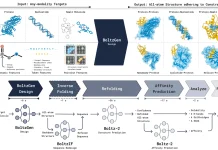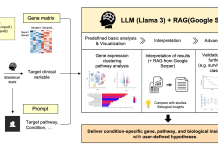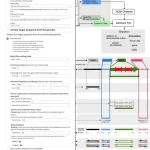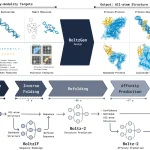A recent study in the Journal of Clinical Oncology reveals a groundbreaking artificial intelligence (AI) tool, ‘DeepHRD‘, that can predict how vulnerable a cancer is to platinum-based chemotherapy using routine histopathology slides. This development, led by scientists at the University of California, San Diego, could drastically improve cancer treatment and bring faster, more accurate care to patients.
The Challenge of Precision Oncology
There has been growing interest in precision medicine for cancer care. This approach tailors treatments to individual patients using their genetic makeup. To make treatment decisions based on tumor biology, specific somatic molecular alterations need to be identified. One such alteration is Homologous Recombination Deficiency (HRD), which exposes cancer cells to platinum-based chemotherapy and PARP inhibitors. Nonetheless, current means of detecting HRD involve complex genomic testing that is often time-consuming, costly, and not readily available to many patients.
DeepHRD: A Game-Changer in Cancer Diagnosis
“This AI approach saves the patient critical time. Oncologists can prescribe treatment immediately after initial tissue diagnosis. Remarkably, the AI test has a negligible failure rate, while current genomic tests have a failure rate of 20 to 30 percent, necessitating re-testing, or even invasive re-biopsy.”
— Ludmil B. Alexandrov
To tackle this issue, the team developed DeepHRD, a deep learning algorithm that can interpret traditional hematoxylin and eosin (H&E) stained slides – the standard diagnostic tool for pathologists. By looking at visual patterns on these slides, DeepHRD makes remarkably accurate predictions of HRD.
This is because of DeepHRD’s ability to bypass genomic testing, which is both expensive and time-consuming. This would enable faster diagnosis, timely initiation of treatment, and better patient outcomes. It also holds prospects of extending precision medicine access to patients from remote areas who may not have resources for advanced genomic testing.
How Does DeepHRD Work?
DeepHRD is a complex AI program created to discover the intricate visual patterns inside common histopathological slides that could predict HRD (homologous recombination deficiency). It employs deep learning, unlike traditional approaches that rely on time-consuming genomic tests that have the power to analyze these widely available images. DeepHRD has at its core a multi-resolution approach, which aims to mimic how pathologists look at tissue samples. This means that when the algorithm looks at the slide, it does so at different magnification levels, giving an overall view of the tissue architecture. By scrutinizing such images on various scales, this system can detect slight patterns and aspects that highlight HRD.
The mechanism uses convolutional neural networks (CNNs), a type of deep learning model famous for its ability to pull valuable information from pictures. The CNNs are trained with a large dataset of histopathology slides having known HRD status so they can learn about visual characteristics associated with this genetic change. Once trained, DeepHRD can process new slides and predict the presence of HRD. The prediction comes with a probability score that indicates the model’s confidence in making such an assessment. This probabilistic approach makes diagnosis more nuanced and allows clinicians to make better-informed decisions.

Key steps involved in the DeepHRD process
- Image acquisition: Digitalized histopathology slides fed into the algorithm.
- Preprocessing: The images undergo preprocessing to enhance image quality and extract relevant features.
- Feature extraction: Deep learning models capture intricate patterns and features from the images.
- Prediction: The model generates a prediction for whether or not HRD is present, along with a confidence score.
DeepHRD automates the analysis of histopathology slides, thus offering a fast, affordable, and accessible way to detect HRD, thereby improving patient care and treatment outcomes.
Clinical Impact of DeepHRD
The clinical effect of DeepHRD is extensive. This novel AI tool can predict homologous recombination deficiency (HRD) directly from routine histopathology slides with a high level of accuracy, thus making it an important advance in precision oncology. It was established that patients whose HRD-positive tumors were diagnosed by the DeepHRD experienced better outcomes after being treated with platinum-based chemotherapy. These included extended progression-free survival, which means delayed disease progression and improved overall survival, indicating longer life expectancy. All these findings underline the potential use of DeepHRD to optimize treatment choice and enhance patient prognosis.
Additionally, by applying DeepHRD, patients likely to benefit from platinum-based therapies can be identified, and unnecessary treatments can be avoided. This saves patients from adverse effects and conserves healthcare resources. Therefore, DeepHRD can revolutionize cancer care by supporting more tailored and efficient therapeutic approaches.
Future of Precision Oncology
DeepHRD’s development marks a major advancement in precision oncology. It may transform cancer treatment using AI and the ready availability of histopathological slides. Though more studies are warranted to validate DeepHRD in larger and heterogeneous patient populations, the initial results are encouraging.
As AI progresses, it is predictable that more advanced tools will be developed for diagnosing and treating cancer. The ultimate aim is to give individualized care to each patient, thus increasing the effectiveness of treatment and enhancing the quality of life. DeepHRD could save numerous lives and redefine cancer care by making personalized medicine available to everyone.
Join the Conversation
What do you think about AI’s prospects of changing the face of cancer treatment?
Have you or anyone close to you suffered from this disease? Kindly share your experiences and valuable comments with us.
Share your comments and questions below. Let’s discuss the future of cancer care together!
Article Source: Reference Paper | Reference Article
FAQs
There has been growing interest in precision medicine for cancer care. Precision oncology is a personalized approach to cancer treatment that uses detailed information about a patient’s genetic makeup, tumor characteristics, and other molecular data to tailor therapies specifically to their individual cancer.
Homologous Recombination Deficiency (HRD) is a genetic condition that affects a cell’s ability to repair double-strand breaks in DNA using the homologous recombination repair pathway. This deficiency can occur due to mutations or dysfunctions in genes responsible for HR, such as BRCA1, BRCA2, and others involved in this repair process. As a result, cells with HRD are more prone to genomic instability, leading to an increased risk of cancer development. HRD is particularly significant in certain types of cancers, such as breast, ovarian, and prostate cancers, and has implications for targeted therapies, like PARP inhibitors, which exploit this deficiency to kill cancer cells selectively.
DeepHRD is a deep learning algorithm that can interpret traditional hematoxylin and eosin (H&E) stained slides, the standard diagnostic tool for pathologists. By examining visual patterns on these slides, DeepHRD makes remarkably accurate predictions of HRD. DeepHRD promises to eliminate time and cost barriers, providing instant, universal access to genomic biomarker detection necessary for precision therapy in advanced cancer patients.
Follow Us!
Learn More:
Anchal is a consulting scientific writing intern at CBIRT with a passion for bioinformatics and its miracles. She is pursuing an MTech in Bioinformatics from Delhi Technological University, Delhi. Through engaging prose, she invites readers to explore the captivating world of bioinformatics, showcasing its groundbreaking contributions to understanding the mysteries of life. Besides science, she enjoys reading and painting.

